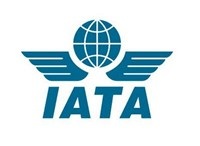
“The United States invented commercial aviation, but do its policies still recognize that aviation is vital to the US economy? Aviation supports some $669.5 billion of business in the US. That’s equivalent to 4.9% of its GDP. Moreover, it supports 9.3 million jobs. But these benefits of aviation connectivity are threatened by the larger tides of partisan political struggles and by a basic misunderstanding of the role of government in overseeing a deregulated industry,” said Tony Tyler, IATA’s Director General and CEO in a speech to the International Aviation Club in Washington, D.C.
IATA put forward four policy principles to maximize aviation’s economic contribution:
- Aviation is far too important to the US economy to be held captive to political battles or used as a piggy bank to balance the budget
- Regulation and operational restrictions are no substitute for infrastructure investment
- The airline industry is a deregulated activity and needs to be treated as such
- Government and industry stakeholders must continue to build on their history of cooperation in critical areas such as safety, environment and security
- Sequestration: Budget sequestration is burdening the economy with flight delays. “Passengers and shippers should not be made the victims of a political dispute. Commercial aviation largely pays its own way through a plethora of dedicated fees and taxes representing around 20% of the cost of a domestic ticket. These fees and charges provided $19 billion to the government in 2012. Air travelers have every reason to expect these taxes will be used for the purpose for which they were intended, not held captive in a battle of political wills,” said Tyler.
- Administration Budget Proposals: The Administration has put forth budget proposals that would add around $5.5 billion in additional fees and charges to the aviation industry. “Implementing these would be a mistake. Connectivity is the lifeblood of modern business. Burdening aviation with even more cost is exactly the wrong approach to getting the economy airborne,” said Tyler.
Infrastructure Investment
Infrastructure and facilitation investments must be aligned to increasing demand for connectivity:
- “Despite the billions contributed by aviation in fees and charges, lack of adequate sustained funding is a perennial problem for aviation. It has slowed implementation of the New York airspace redesign and the Federal Aviation Administration’s NextGen air traffic modernization to the detriment of travelers and shippers,” said Tyler.
- Long delays at immigration and customs facilities are another problem. “Demand for international connectivity and tourism is rising but US Customs and Border Protection (CBP) staffing levels have not kept pace. Wait times to clear customs and immigration at major airports regularly exceed CBP’s own aspirational target of 60 minutes. At New York John F. Kennedy Airport’s Terminal 1, for example, the average wait time is 111-minutes during peak periods. And on numerous occasion travelers wait three hours and longer. And this is before any sequestration-related impacts. Instead of holding aviation captive to the budget process, the government needs to fix the problems it has created,” said Tyler.
Tyler criticized short-sighted and overly-intrusive regulations.
“The airline industry was deregulated in 1978 but often it seems this was in name only. The continued micro-managing of competition has the real potential to harm consumers,” said Tyler. This has specific reference as the industry modernizes its distribution capabilities:
- The US Department of Transportation (DOT) is preparing to propose a rule requiring airlines to display through the global distribution system (GDS) channel some or all of their ancillary products if they sell any tickets through that channel. “This would substitute federal regulation for airline commercial decisions. It’s an unreasonable intrusion into the marketplace. Airlines already list all of their ancillary products and services on their XML-enabled websites. However, the GDS channel used by travel agents is limited in the amount and manner in which content can be displayed because of legacy pre-Internet messaging standards,” said Tyler.
- IATA urged governments and stakeholders to support the industry’s effort to develop a New Distribution Capability (NDC). “NDC—based on XML standards--will enable airlines to offer customers the same travel options, regardless of whether they go directly to the airline website, or use a travel agent powered by a GDS. The result will be better-informed customers as airlines and third parties are able to display more information on flight options and services than are currently available through the indirect channel. NDC is a flexible private-sector solution to address an issue arising from commercial developments in the airline industry. It is far superior to an inflexible regulatory mandate that is not in the spirit of deregulation nor aligned with the workings of the free market.”
Tyler urged the US to continue to align aviation-related environment policies with a global effort led by the International Civil Aviation Organization (ICAO) and supporting the industry’s three sequential goals of (1) improving fuel efficiency by 1.5% annually to 2020, (2) capping net emissions with carbon-neutral growth from 2020 and (3) cutting net emissions in half by 2050 compared to 2005 levels.
- Tyler thanked Congress and the Obama Administration for their support of the ICAO process as the way forward on positive economic measures, also known as market-based measures, rather than regional solutions such as the EU’s Emissions Trading Scheme (ETS). “With the clock stopped on the ETS, governments can now focus their attention on finding a global way forward through the ICAO processes. I do not expect it will be easy; nonetheless, this is an issue that belongs at ICAO,” said Tyler.
- Tyler also thanked the Obama Administration for recently renewing the Farm to Fly industry-government partnership that aims to support annual production of one billion gallons of sustainable biofuels by 2018. “Farm to Fly is an example of the type of cooperation that will help us to unlock the potential for biofuels, which is a critical component to meeting the industry’s commitment to reduce aviation’s net emissions 50% by 2050 compared to 2005,” Tyler said.
IATA Corporate Communication
